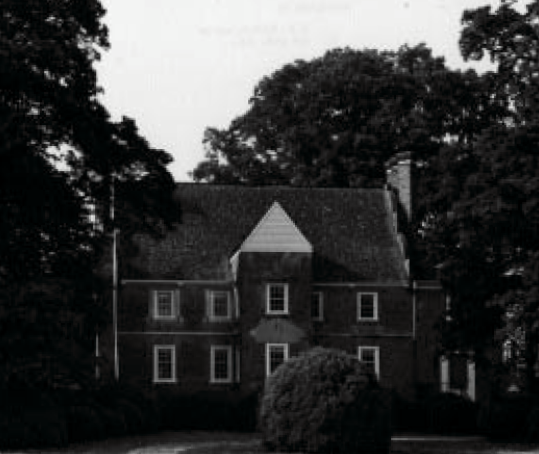Bacon’s Castle (c. 1656). Route va 10 Surry, Virginia
The almost legendary Bacon’s Castle is now fortunately open to the public for at least part of the year. Preservation News (of the National Trust) terms the castle “the sole surviving high Jacobean manor house in America” (January 1974), so it is doubly welcome that it can be seen. The Jacobean was an elusive period of English (hence early Colonial) architecture, emerging largely during the reign of James I (1603-25) but picking up the thread of development begun under his predecessor, the redoubtable Elizabeth 1.

Under James, it moved away from the transitional Tudor style toward greater employment of newly fashionable Renaissance motifs, especially in details. It never fully established itself, however. What it lacked in finesse it sought to assert in bravura. There are awkward moments in the Jacobean—even the use of the Greek Jakobos (James) seems odd—but it made for a spirited scene in domestic building.
At Bacon’s Castle (actually built by a man named Arthur Allen) the two boldly curvilinear gable ends, recalling Flemish work, are topped by three square semidetached chimney flues set on the diagonal and rising with Tudor-Jacobean conviction. Note the unusual cross plan of the house with gabled “porches,” a typical medieval feature.
In 1856 the dwelling was substantially expanded to the east by uncongenial additions. Partial restoration took place in 1939-41, but by that time the house had lost much of its original medievalism (the casement windows, for example). Also gone is the original roof, which some believe was of stone tiles, as one of them has been discovered. The interior has been altered but the superb paneling installed around 1740 fortunately remains. Note, also, the two original fireplaces with their heavy wood beams finished with a chamfer and “lambs tongue.”
Nathaniel Bacon (1647-76), incidentally, organized the first armed rebellion against British authority (the tyranny of Governor William Berkeley) ninety-nine years before the battles of Lexington and Concord. His troops’ use of Allen’s house in 1676 gave it its subsequent sobriquet. Bacon died during the campaign (of either malaria or poison) but his actions were influential in initiating an “American” consciousness.
Bacon’s Castle and 40 acres/16 hectares of land were purchased in 1973 by the Association for the Preservation of Virginia Antiquities. As Professor William H. Pierson, Jr., put it, “Bacon’s Castle is a milestone in the history of the Virginia Colony” (American Buildings and Their Architects, Doubleday, 1970).
Date added: 2025-08-01; views: 195;
